Whether you want to feel like a flying superhero or you just want to switch things up a bit, aerial yoga can take your yoga routine to new heights. Practicing traditional yoga has long been considered one of the best ways to stay fit and release stress; aerial yoga has a few additional benefits.
Aerial yoga is quickly gaining popularity worldwide and provides a slew of physical and well-being benefits. This uplifting practice is a great way to increase physical stamina and strength while boosting confidence and body positivity.
What Is Aerial Yoga?
Aerial yoga, also referred to as anti-gravity yoga, shares a lot of similarities with traditional yoga. However, there’s a big difference. When participating in aerial yoga classes, you swap a yoga mat for a silk hammock, and the hammock will support the weight of your body, which means you’ll be suspended in the air!
For physical training, you can find aerial yoga classes near me..
What Is A Hammock?
A hammock is the basic requirement of aerial yoga and is specially designed to support up to 300 kilograms on average. The rig typically consists of support chains, a webbing strap, a silk hammock, and carabiners. Two support chains hang from the ceiling to less than one meter above ground level, and the hammock is connected at the height set by the user.
How To Install The Hammock?
There are two styles of installing an aerial yoga hammock, depending on the effects desired: either two anchor points for more stability or two anchor points to give the participant additional range of motion.
Purpose Of Hammock
The hammock acts like a swing supporting the hips for forwarding bends and backbends. Difficult mat-based yoga postures may prove easier to perform through aerial yoga, while the hammock’s movement further contributes to adding variety to the aerial workout.
Health Benefits Of Aerial Yoga
Aerial yoga offers several physical and psychological benefits, some of which are listed below:
Increase Whole-Body Flexibility
Practicing aerial yoga is a full-body type of movement, so it strengthens all muscles. The hammock itself allows you to go deeper into the stretches and poses, further enhancing full-body flexibility.
Alleviate Back And Neck Pressure
Sitting or standing all day long allows gravity to weigh down the spine, but being upside down in certain aerial yoga moves can help lengthen and decompress the spine.
Promote Circulation
Given the nature of the poses and breathing through the movements, aerial yoga is great for promoting circulation throughout the body as well as digestion.
Improve Core Strength
Maintaining stability throughout the different poses, the abdominal muscles are engaged, and it strengthens your abdominal muscle and improves core strength.
Boost Confidence And Mood
Aerial yoga makes more advanced yoga poses accessible to beginner yogis by the support of the sling, which can boost confidence in the practice and provide a sense of accomplishment.
Low-Impact Exercise
Because of its low or zero-impact nature, aerial yoga is an excellent option for those who want to move their bodies but experience joint issues. Using gravity and suspension, aerial yoga allows you to create space in the body without compressing the joints. There are even joint-relief-focused aerial yoga classes that specifically target joint pressure and pain.
Can You Practice Aerial Yoga At Home?
You can do aerial yoga at home without having to renovate your entire living room. However, it may take some creativity. You can connect Some swings or ropes to metal framing, allowing you to fly either inside or outside. You can also set up your silks or ropes around sturdy support beams, such as tree branches or exposed front porch beams, similar to the way you’d traditionally hang a hammock.
However, you shouldn’t practice aerial yoga at home unless you’re very well versed in the equipment and rules. Studios have professional equipment, rigs, fabrics, and safety mats, and they also provide hands-on spotting by certified and trained instructors.
Always make sure to double-check your setups before flying at home because attachments can loosen with time.
Equipment Needed For Aerial Yoga
You really need only your body to do aerial yoga for attending aerial yoga in a studio, especially if the studio is aerial-focused. You can fly at home or in-studio, but wherever you choose to play, wear well-fitted clothing that covers your body to prevent chafing!
Wearing well-fitted activewear with decent coverage is recommended because the ropes and silks can rub against your skin. The less obstruction and direct skin contact, the better. Some classes offer towels to help with cushioning, but you can also always bring your own.
If you can’t find an aerial studio nearby, findyourgym.ae can helps you to find the best yoga studio in Dubai.
Risks of Aerial Yoga
What goes up must come down — not surprisingly, aerial yoga comes with the added risk of falling. So be sure to listen to your body, follow your teacher’s instructions, and not push past your limits.
If you fall in one of the following categories, you should check with a healthcare professional before trying aerial yoga:
- ♦ You are pregnant
- ♦ Have a heart condition
- ♦ Having unregulated blood pressure issues
- ♦ Facing an eye condition such as cataracts or retinal detachment
The Best 6 Poses For Aerial Yoga
There are thousands of great Aerial Yoga poses, and your teacher will usually follow a balanced flow to suit the group or your specific needs. If you practice on your own and you are just looking for some inspiration, we propose below our selection of best poses for Aerial Yoga.

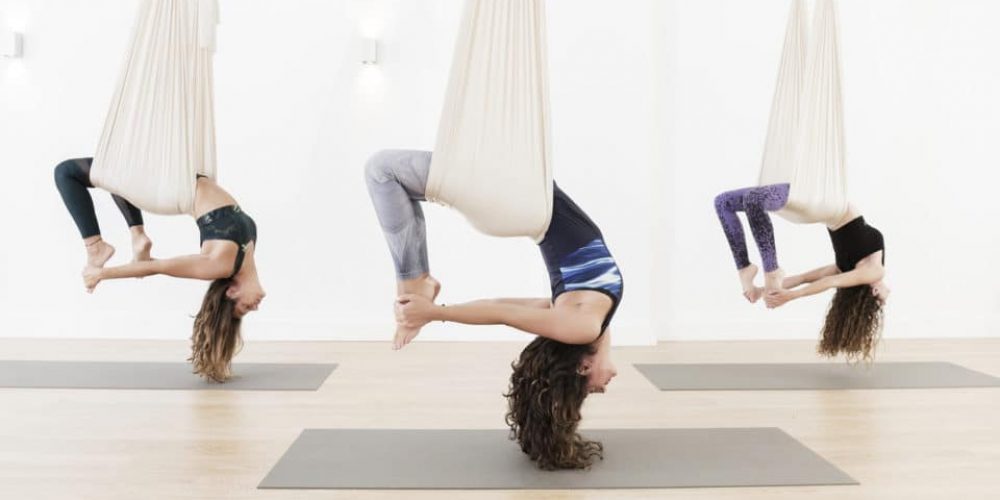
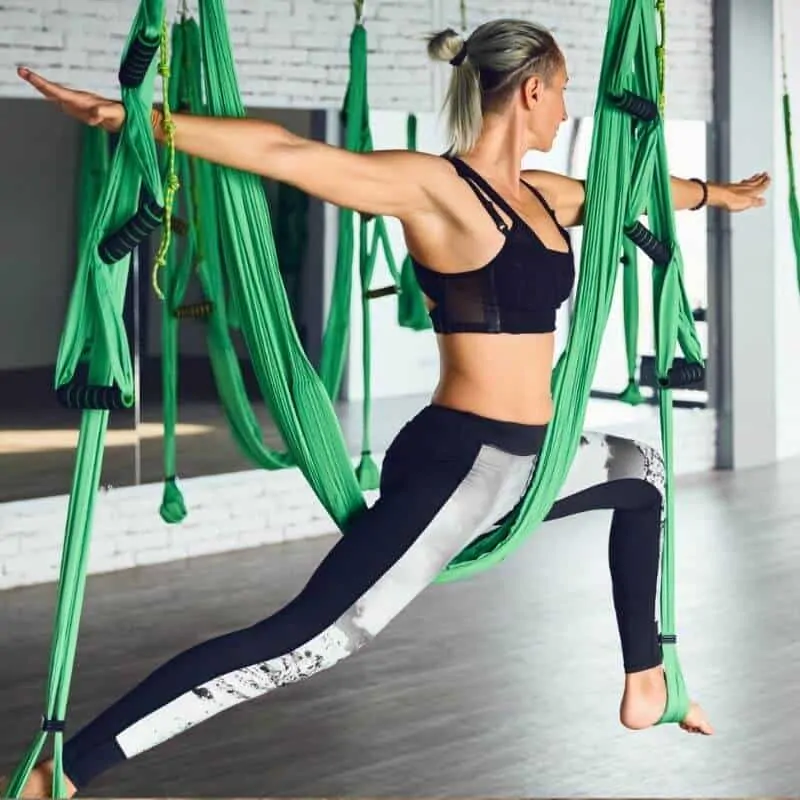
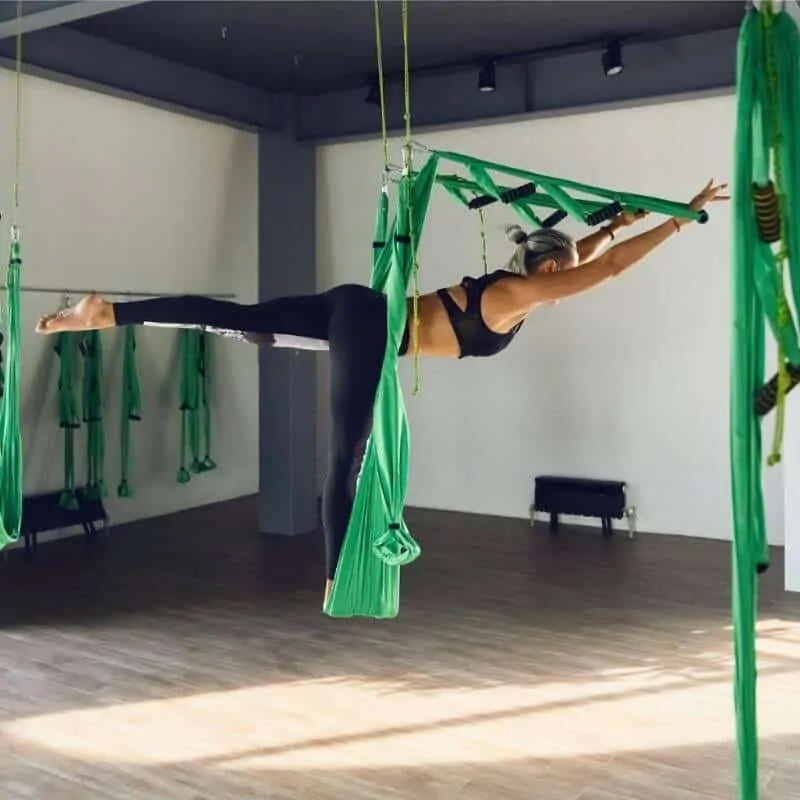
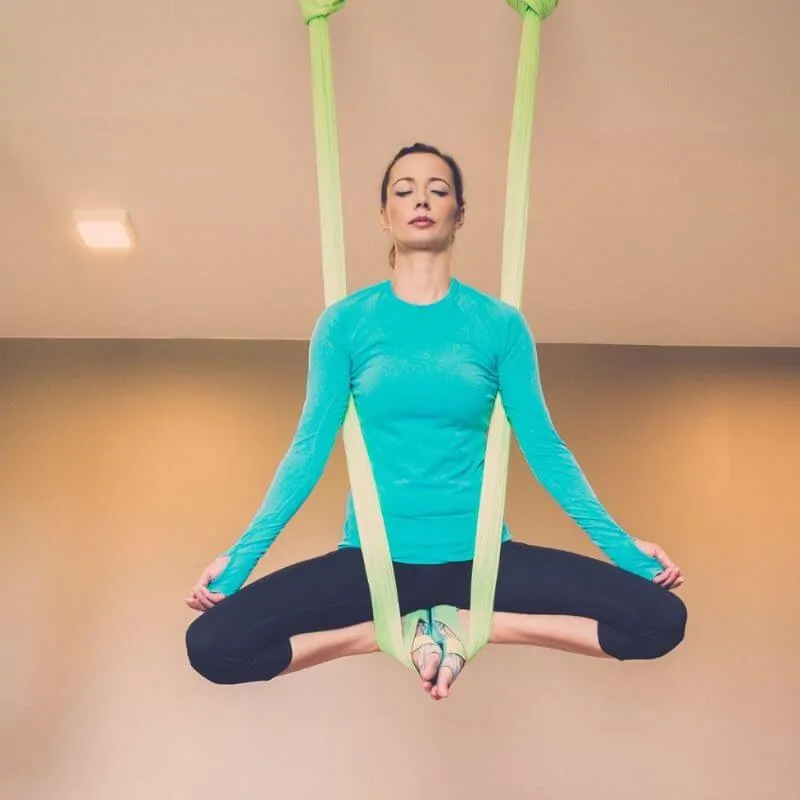
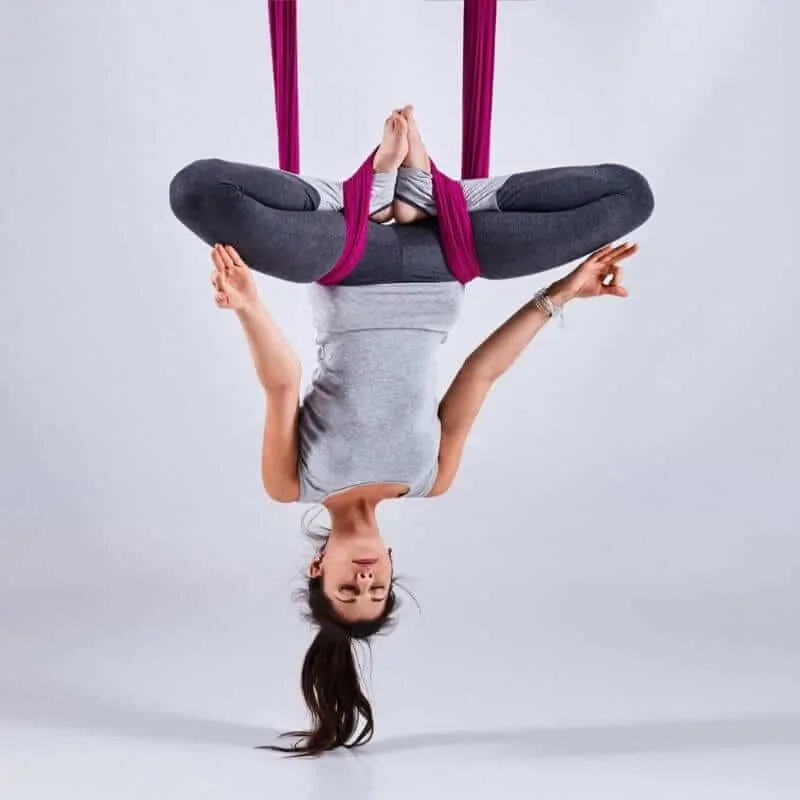
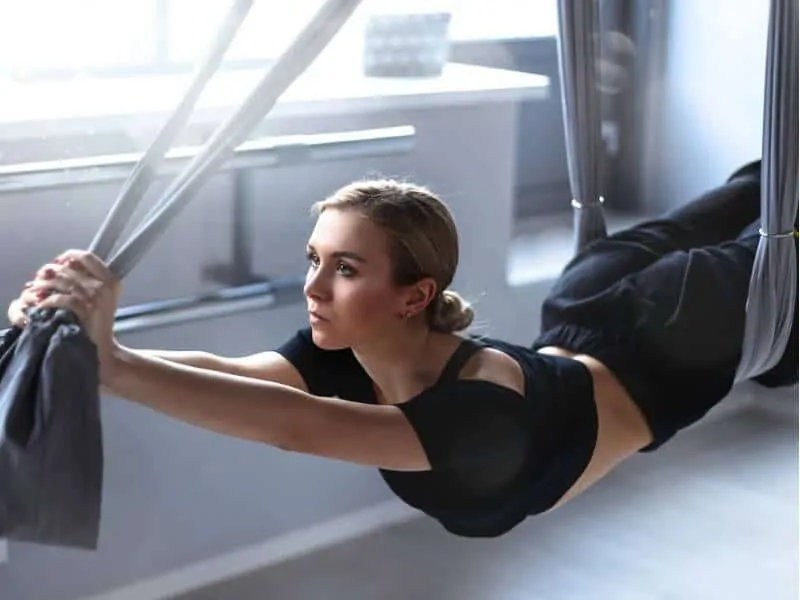
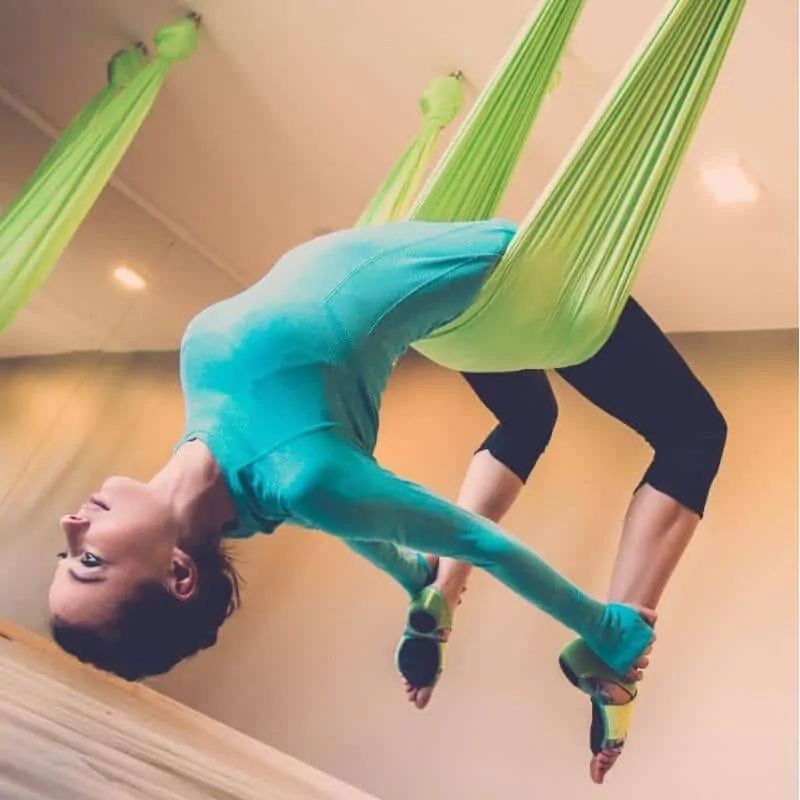







Comments 0